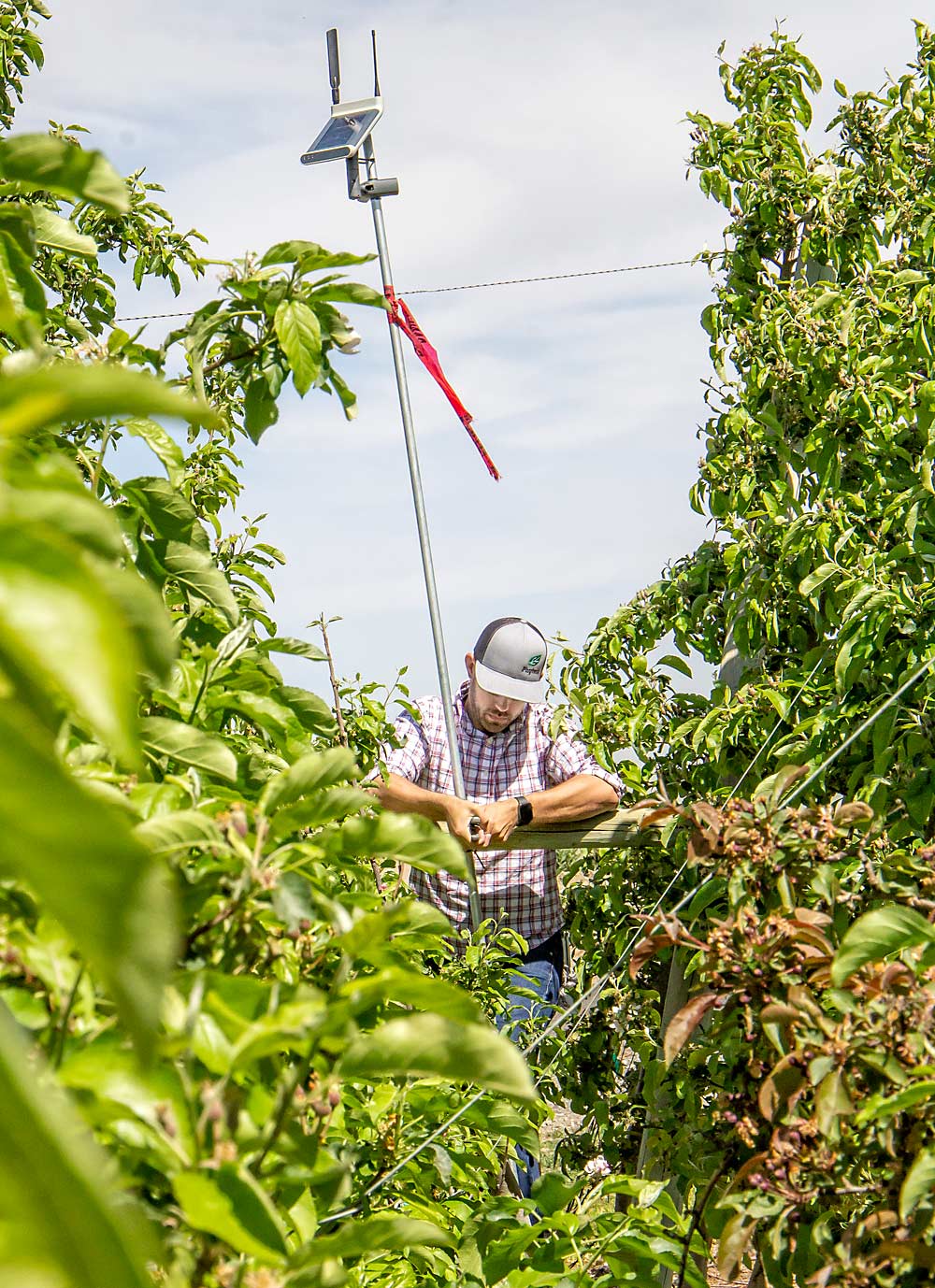
These apples are being watched.
Not just by the orchard manager and his crew, but also by an array of sensor technologies that aim to help farmers track everything from irrigation to crop load.
It’s increasingly common to find tree fruit growers testing out sensors for precision irrigation or weather conditions, but this 10-acre Gala block in Washington’s Columbia Basin hosts 66 sensors, including weather stations, soil sensors, irrigation pressure sensors, dendrometers and fruit growth sensors, and it is regularly imaged by drones and a smart sprayer system that assesses the tree canopy.
This technological overload will allow the Washington Tree Fruit Research Commission, Washington State University researchers, and innov8.ag, a new ag data company based in Walla Walla, to look at how growers can best use sensor data to improve or automate management decisions.
The emerging sensor field is exciting, but growers need help sorting through the information, said Jeff Cleveringa, head of research and development for Oneonta Starr Ranch Growers.
“For us as growers, what happens is that we get eight companies all coming to us, one is a water sensing company and a fruit-size sensing and chlorophyll sensing and they all want to give you all this data, but you don’t have any way to layer that data, so how does that help make a management decision?” said Cleveringa, who chairs the research commission’s technology committee. “We end up with data paralysis.”
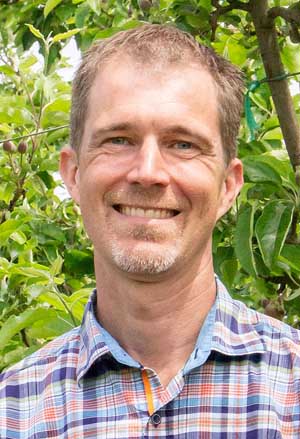
Preventing that paralysis by creating a centralized data platform that allows growers to integrate the insights from different sensors should create more value for growers and the sensor companies, said Steve Mantle, the founder and CEO of innov8.ag. He started the company, after leaving a career at Microsoft, to try to bridge the gap between specialty crop agriculture’s data needs and the platforms available.
The project will look at both the sensors’ performance and how to use and combine the data they provide.
“We have sensors that are now robust enough and affordable enough for growers to use them, but we don’t know enough about how best to determine the utility of a sensor,” said research commission director Ines Hanrahan. “Above all, this is a pilot project to facilitate public-private partnership to create a mini innovation hub around smart orchard systems that we will then use as a launching pad to create more projects.”
Sensor partners
At first, Hanrahan and Mantle wondered how many sensor companies would be interested in volunteering their products for this project. But companies were eager to learn from the feedback from the orchardists and scientists, too.
“Now we have a waiting list for companies for next year,” Hanrahan said. “Everyone ultimately sees the value in learning how to utilize a common platform. Everyone that has a good product knows how valuable it is to have it ground-truthed.”
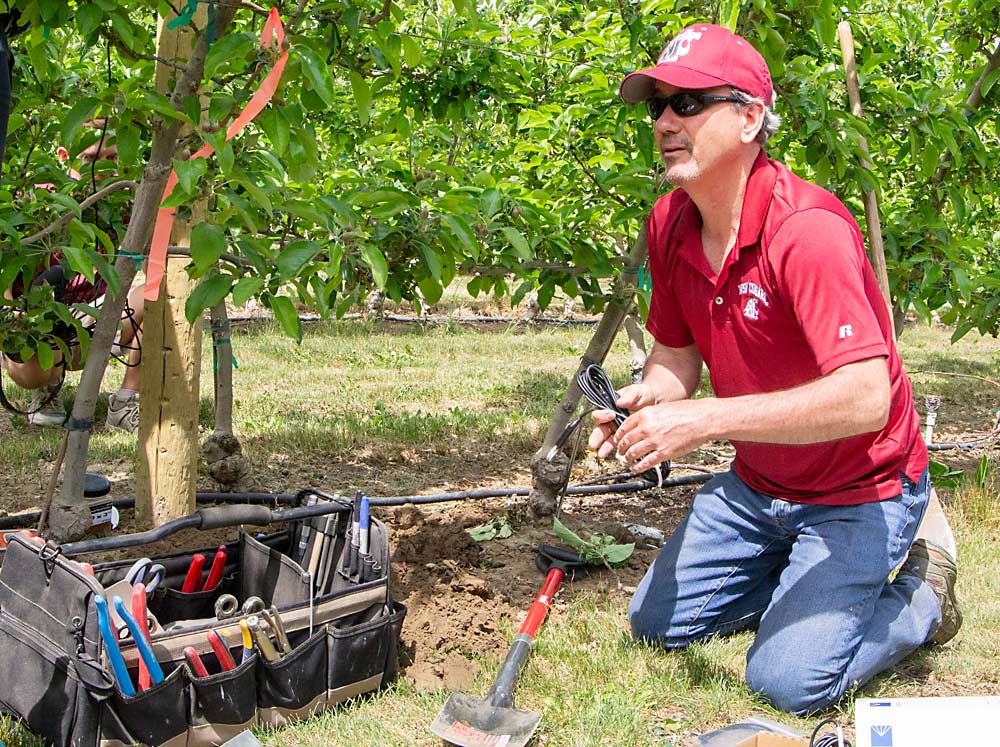
Sensor companies participating in the project include: AquaSpy, which makes soil moisture sensors; the METER Group, which makes weather, soil moisture and leaf wetness sensors; Teralytic, which makes soil nutrient probes; Davis Instruments, which makes weather stations; Tuctronics, a Walla Walla-based company which installs soil and weather sensors; Phytech, an Israel-based company that offers plant stress sensing; and Smart Guided Systems, which sells canopy-scanning precision sprayer technology (see related story and video: Upgrade your airblast sprayer).
The list includes both long-standing and new sensors. Many of the soil moisture and environmental condition sensors have already been proven to work; the question is how easy they are for growers to manage and whether the insights they offer improve farm performance, said Bernardita Sallato, a tree fruit extension specialist with Washington State University.
For other systems making a debut in Washington tree fruit orchards, such as Teralytic’s nutrient sensor that makes hourly readings of nitrogen, phosphorus and potassium, more research is needed to validate their use in orchards and determine how the readings correlate with established modes of nutrient sampling, she said. For some sandy orchard sites that have problems with nutrient leaching, such a tool could potentially be valuable, she said.
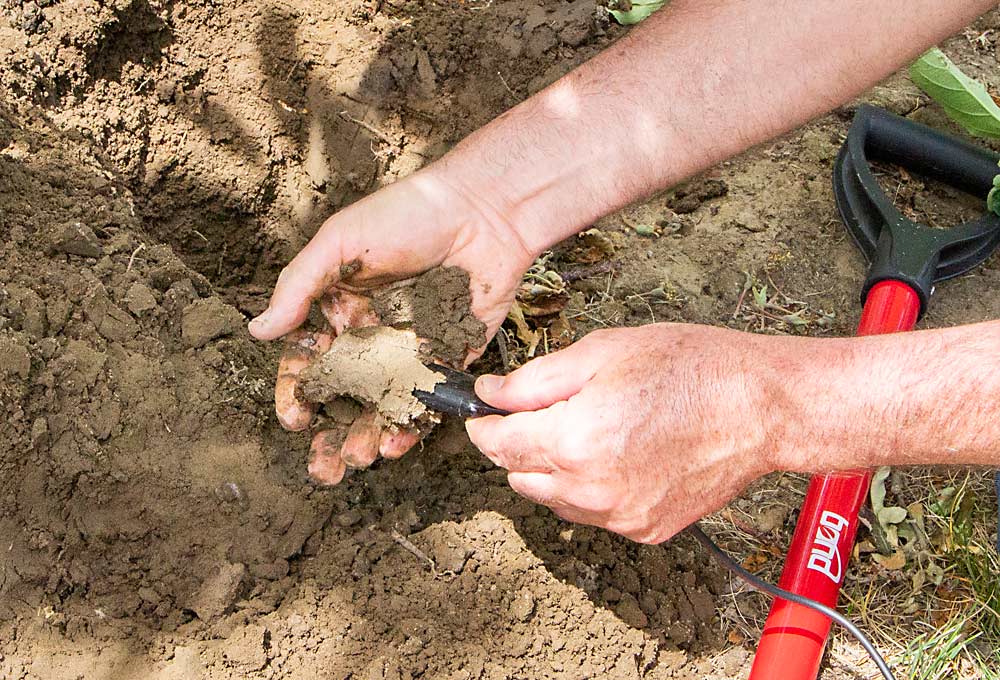
Another relative newcomer to Washington, Phytech, offers plant stress analysis from a variety of sensors, including a dendrometer, soil moisture sensors and weather data.
“It’s like a Fitbit for plants,” said Travis Klicker, referring to the dendrometer he installed to measure minute fluctuations in a tree trunk. He drilled a small hole in the trunk for the rod that supports the device, while a second rod presses against the stem and records the subtle changes as the tree contracts and expands in response to water use.
Dendrometers are not a new tool, especially for plant physiology research, but Phytech’s app combines the real-time trunk measurements with soil moisture sensors, fruit growth sensors, irrigation flows and weather data to help growers save water by allocating irrigation precisely to trees’ needs, he said.
Improving irrigation management was a top priority for growers who responded to a survey asking what they want to learn about sensors, Sallato said. They also want guidelines for acting on the data sensors provide for their specific crops and conditions, she said. Sensors offer plenty of cool insights, but growers need to know how they are going to use them.
“It has to be helpful for growers to do something that is economically viable,” she said. For example, precision irrigation strategies may pay off in bitter pit-prone Honeycrisp, but not in other, more forgiving varieties.
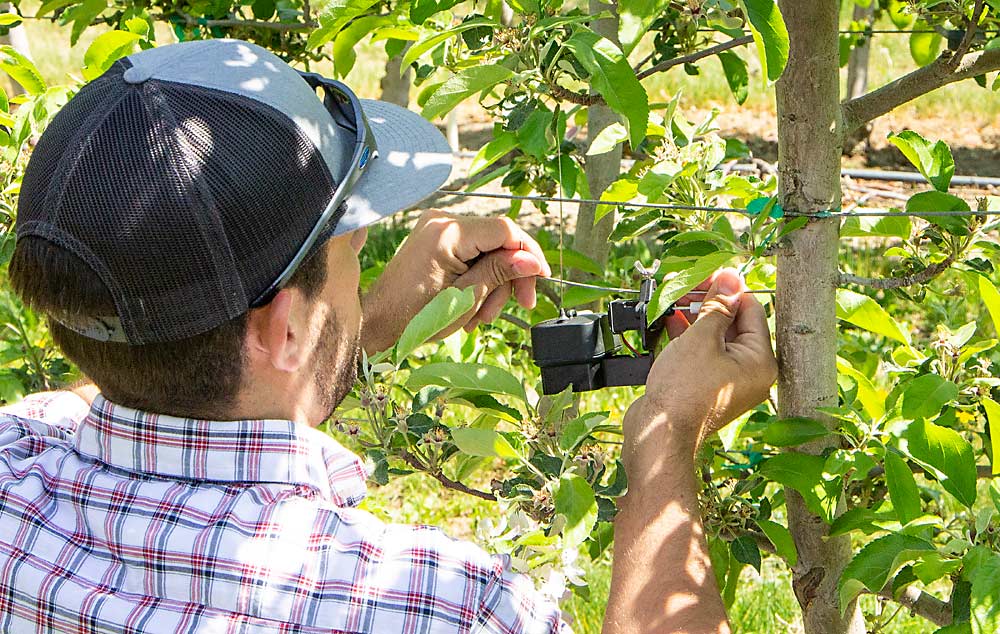
Data consolidation
When it comes to vigor management and canopy variability, many sensing approaches play a role: irrigation flows, soil moisture, soil water tension, soil nutrient status, plant water status, NDVI mapping and canopy imaging.
If each of those sensors feeds into a different app, growers are missing out on potential insights from layering all that information into one ecosystem, said Mantle. Several of the sensor companies already provide data to Microsoft’s prototype ag data platform, FarmBeats, he said, and he’s working to incorporate the others.
“It’s a nice feedback loop with the grower, and the growers on the commission, on what matters to them and what doesn’t. That helps guide us as we build commercial capabilities that are highly relevant,” he said. “We really want growers to get the value out of their data.”
Eventually, he hopes to go beyond sensor data to incorporate inputs such as labor, chemicals and water, as well as harvest data to help growers see the value of their operations from many angles, Mantle said.
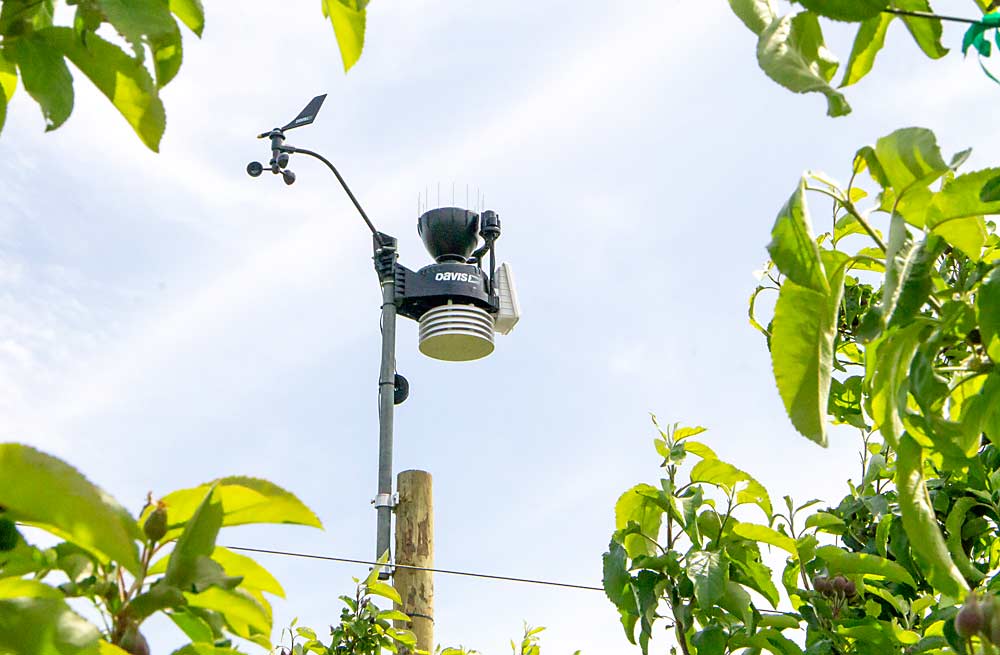
On the sensor front, researchers can then look to that data ecosystem to see how best to use the technologies to answer management challenges growers have, said WSU agricultural engineer Lav Khot. Drone mapping could inform where to locate soil moisture sensors, for example. Combining nutrient probes with canopy vigor maps could lead to precision fertilizer programs.
The Sensor Orchard project provides a first step for researchers to figure out what’s worth more study, Khot and Sallato said.
“This is a good way to see what works for us and what doesn’t in tree fruit,” Khot said. “The data and the decisions matter more than what collects the data.” •
—by Kate Prengaman






Leave A Comment